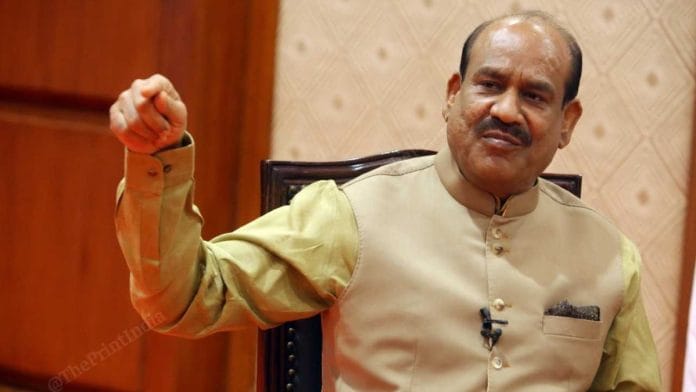New Delhi: Lok Sabha Speaker Om Birla has extended an invitation to the rural artisans who created the art installations for a gallery inside the new Parliament building so they can see their work, politician and activist Jaya Jaitly has told ThePrint.
This comes after Jaitly wrote to Birla informing him that the artisans were being denied access to the building. She expressed concern that they were not allowed to see the results of their efforts. Her letter received a “prompt response” from the Speaker’s secretary.
“He (Birla’s secretary) informed me that the Speaker would like to extend an invitation to the artisans and me. He mentioned arranging a guided tour for all of them and expressed a desire to meet them personally,” she said. Jaitly is founder and president of the Dastkari Haat Samiti, a Delhi-based NGO that showcases the work of these artisans.
“We were pleased with the swift reaction,” she further said. “Although the artisans are scattered across different parts of India and we’re unsure how we’ll manage to gather them all, we’re grateful for the invitation and will find a way to make it happen.”
Over 300 artisans from across India, who gathered clay from every state and Union territory, contributed to the creation of the Shilp Deergha Gallery in the new Parliament building.
In her letter to the Speaker, Jaitly wrote: “Unfortunately, even I have not been permitted to bring a professional photographer to capture images of our fully completed gallery, despite our efforts in creating and installing all the artworks.”
She told ThePrint: “I learned that a friend of mine, who is acquainted with a Member of Parliament, wanted to see the gallery. Even though the MP managed to get her passes to attend the parliamentary session, they initially weren’t allowed to view the gallery. The guards refused entry, and it took a lot of convincing for them to let her in for just 10 minutes.”
Jaitly had also requested the Speaker to consider organising guided and informative tours to view the unique artworks and gallery spaces in the new building when the Parliament is not in session. She suggested that these tours could be arranged for small, carefully controlled groups of up to 20 people, each accompanied by a knowledgeable guide.
“I would love to see a system where everyone could view the incredible work done by these karigars,” Jaitly said while speaking to ThePrint.
“When we were commissioning the work, we were told it needed to be ‘more excellent than excellent’. We believed this was the best work. If these pieces have been selected, approved, and showcased as the finest examples of India’s craft heritage, then we should be proud to share them with as many people as possible,” she added.
The gallery features eight installations, each with a unique theme: Aastha, Gyan, Part, Samrasta, Swavlamban, Prakriti, Ullas, and Yatra.
Explaining one of the themes and her interpretation, she said, “For instance, Aastha means faith…My interpretation is that beyond our own religious beliefs, we should have faith in our country.”
“We all come from the same soil and return to it. Many people who live abroad for a long time put the mitti (soil) on their forehead when they return to India. This signifies that faith in one’s country should transcend any religious beliefs we may hold.”
Talking about how some Members of Parliament, who are currently the only ones with access to the gallery, asked her which part of the artwork came from their own state, she said, “You can’t divide an art piece like that. It’s a combined effort, showcasing all the art forms together.”
When asked how government policies for rural artisans have changed since she founded Dastkari Haat Samiti, she said that the policies remain inflexible and, often, at a scale that is too big to address the unique needs of individual artisans.
“Craftsmanship can thrive and eventually become a heritage craft if supported properly. However, government schemes are often too broad. They may work for 2,000 or 200 people but not for 20. The craft sector is very flexible and informal—artisans don’t work in factories, they work in diverse communities with different religions and practices,” she said.
Apart from policy, marketing is the other aspect that is important to support heritage craft, she said. “The sector involves various important processes and techniques, yet marketing remains crucial. That’s why I named it Dastkari Haat Samiti because ‘haat‘ is an old traditional form of marketing. It’s a very cultural space where people meet each other, they talk, and they socialise.”
(Edited by Sanya Mathur)






